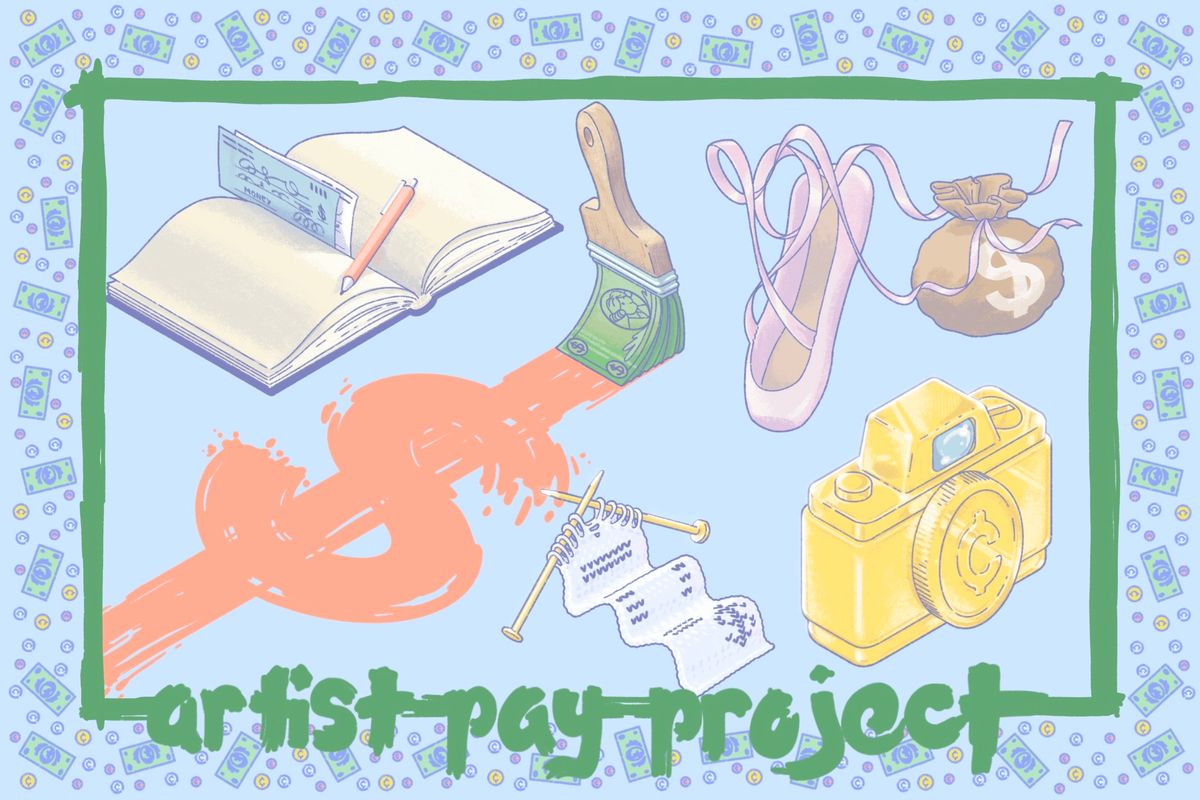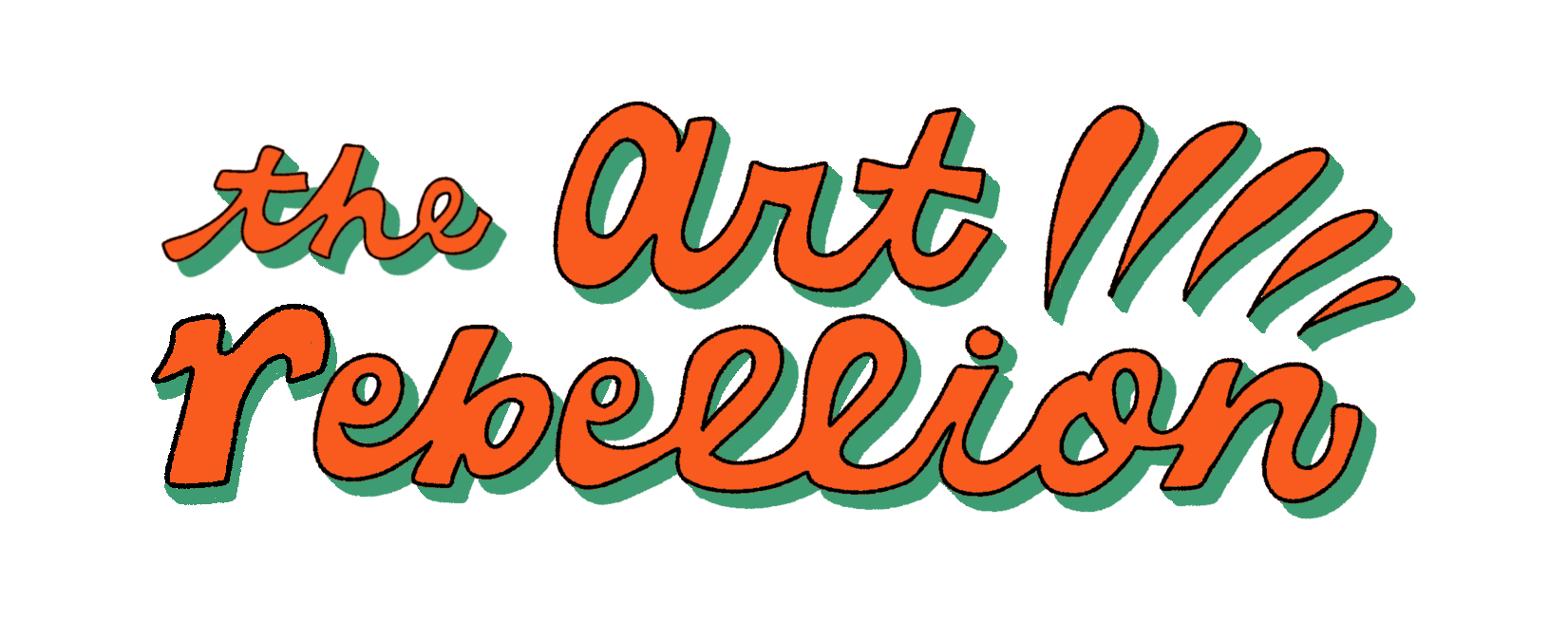Artist $napshot: LA-based textile artist
This full time artist-mom has a fluctuating income and made $14,000 last year.

The Artist Pay Project is a series exploring how artists in the U.S. survive and thrive amid a cost of living crisis.
This Artist $napshot tells the story of a 34-year-old textile artist who made $14,000 last year.
Survey
Art Practice: Textile artist
Location: Los Angeles, CA
Age: 34
Pronouns: She/ Her
Earnings
Income:
$80,000 annual family income, combined with partner
How much of your income is from your art practice?
$14,000
Where does the rest of your income come from?
All the income I produce is from art
How do you price your work?
I don’t really have a system. I price in reference to size, technique, and time. I have pieces starting at $400 up to $80,000.
Expenses
Housing:
$1,850 a month
What are your major monthly expenses?
Childcare: $1,200
Food: $1,200
Car insurance + gas: $500
Do you have any expenses related to your art practice?
Supplies: varies, and renting a storage: $130
Larger financial picture
Do you have any financial support from outside sources?
I’m a full time artist-mom who lives with my kid and husband. My partner is the main source of income at home.
Have you received any grants to support your art?
Last year I had a residency that paid $2,000. This year I was selected for a new one for $20,000.
Do you have health insurance?
Yes, through Covered CA
Do you have any debt?
N/A
Do you have any savings?
N/A
Did you pursue higher education?
Yes, I have a master’s degree
Q&A
Responses edited lightly for length and clarity.
Does your annual salary change from year to year?
Yeah, it changes a lot. Because this year I'm doing a residency that is paying me much more.
Is there something that determines whether you'll make more or less each year? Getting a residency or selling bigger pieces — what has the biggest impact on what you earn?
It’s more than what I’m selling. Because sadly, at this point of my career, my sales are super unstable. More than the sales, what I'm doing is trying to apply to residencies and grants. So if I win a grant or a residency, and depending on the amount, that is gonna [determine] my income that year.
For example this year, I’m in a residency, a four month residency in LA that is paying me monthly $5,000. So at the end of the four month residency, I'm gonna be earning like $20,000. So it's much more than my income last year, and it's not counting the sales.
So is that the model that you hope to use going forward — looking for different residencies each year?
I mean of course, I'm trying to increase the sales. This year for example, is the first time that I'm being in a commercial gallery. In past years, I’ve been showing in non-commercial galleries. Of course in non-commercial galleries, usually the sales are not good when you show there. Usually my sales — I sell through my Instagram or directly with people who know my art. But now that I'm showing in commercial galleries, I hope that I'm going to be selling more. So I'm gonna be depending just on residencies and those kind of things. I hope that I'm gonna be increasing my income in the next couple of years so it's not gonna depend all the time on residences. That will be great. It will be awesome if I have a more stable income.
You mentioned you have a family.
Yeah, I have a five-and-a-half year old kid and I have a partner. And right now he's the one who brings in a more stable income monthly. But definitely I would love to bring the same amount of money home each month.
Have things become more financially stable for you since the beginning of your career?
I think that I've been becoming more stable. I’m feeling more confident, but I mean I still depend on my husband for money, you know? These four months it's like, I’m bringing money home, but after that I don't know — we are gonna depend on him again.
Why do you think it's so challenging for artists to make a living from their art only?
I don't know. I really wish it was easier but I think that sales are a struggle.
With other artists in your community, do you find that they’re having the same kind of issues that you experience with sales and getting residencies?
There are artists that have other income things, like they teach or they have other art-related work. That's always a good idea. But because I'm also a mom, I try to be at home with my kid. So I do most of my practice at home.
What resources would help artists make a living from their work or something that you would like to see help artists in the world?
I think that there's not much public support to the artists in the US. Everything comes from private work, but I think that it will be great if the city or the state provides more support for the artists. We are struggling with the instability of our work, health insurance. It's not just the money. It's everything related to that. I feel that it would be great to have support in areas related. But I feel the US public system doesn’t really work well.
Thinking about how you make sales through your social media and website — could you talk about how you built an audience for your work and how frequently you sell your work on average?
I sell my work every two months or something like that. I have to be fair with myself — I've been focused the last couple of months or even the last year, not much in sales, more in working because I've been showing a lot. I’m producing more than selling, so it's not that I've been promoting my work much even on my social media. I’ve been showing a lot of my work, but it's not that I am reminding people like, “Oh you can buy my work.” And I think that that's really important when you want to sell. You have to remember to remind people that they can buy your work.
I've been working on installation, and so of course, people who follow me on Instagram, they’re probably not gonna buy the installation on Instagram. They're gonna buy the small pieces, like $1,000 or less, so I have to show them those pieces on Instagram. I haven't showed them as frequently. When I'm showing those pieces, I usually sell those pieces like once per month or every two months, but I have to do the work, promoting my work. For the next couple of months, I've been more focused on creating because I have a lot of shows. So I have not been focusing on selling lately.
I've been building my community through social media, showing my process. I invite them to be in my mailing list. Every once in a while, [highlighting] my shop on my website with some small work that they can buy and those kinds of things.
Do you feel like a social media presence is important for artists today when it comes to getting people to see and buy their work?
For me, it's been really, really important. When I moved to the states almost six years ago, I wasn't an artist. In Chile, I was working in another field. So when I moved here, I decided to become an artist because I didn't know anyone. I started showing on Instagram, showing my process and my pieces. Instagram is not a medium just for selling my art, it’s also the medium where curators have met my art. And during the last couple of years, I get a lot of invitations to show through social media. Especially because during COVID lockdown, studio visits were hard. Right now, a lot of things are happening through the internet so you have to build an internet presence.
You weren't working as an artist in South America, but from what you saw, do you think it would be easier to be an artist in Chile versus the US?
It has pros and cons, definitely. Chile’s a small country so probably the market is smaller. There's less people buying art. But there's more public support to the artist. There's more public grants and things to the artist. I know that you can apply to grants to create art much more than here. So you're gonna have more support to your creative process there. But also, the US is bigger and closer to the world. Chile is country that is in the South and we moved here not because of my career, but because my life partner was doing a PhD.
So yeah, there's pros and cons to be here.
Read more about the Artist Pay Project.
